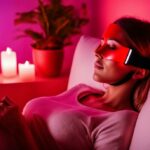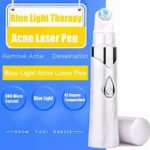Last Updated on 6 months by Francis
Welcome to our comprehensive guide on using red light therapy to boost testosterone levels. If you’re looking for a natural and non-invasive approach to enhance your testosterone production, red light therapy may be the solution you’ve been searching for.
Red light therapy has gained popularity in recent years for its wide range of health benefits, including its potential for restoring hormonal balance. In this section, we’ll explore how red light therapy affects testosterone production and how to use it effectively for optimal results.
When testosterone levels are low, it can negatively impact energy, mood, and overall well-being. Fortunately, red light therapy has been shown to increase testosterone levels in both men and women. By stimulating cellular energy production, red light therapy can enhance testosterone production and improve hormonal balance.
Whether you’re struggling with low testosterone levels or looking to optimize your hormonal balance, red light therapy can be an effective tool in your arsenal. Let’s explore how to use it effectively.
Contents
Key Takeaways:
- Red light therapy can be a natural and non-invasive approach to boosting testosterone levels.
- Low testosterone levels can negatively impact energy, mood, and overall well-being.
- Red light therapy stimulates cellular energy production and can enhance testosterone production.
- Red light therapy can be effective for both men and women.
- Using red light therapy effectively requires understanding proper dosage, timing, and device selection.
Understanding Testosterone and Its Importance
Testosterone is a hormone that plays a vital role in the development and maintenance of male characteristics. It’s produced in the testes and adrenal glands, but women also have small amounts of testosterone in their bodies. Testosterone is essential for overall health, including maintaining bone density, muscle mass, and red blood cell production. It also affects libido, mood, and cognitive function.
Optimal testosterone levels are crucial for male hormone balance and general well-being. However, as men age, testosterone production naturally declines, leading to symptoms such as decreased energy, muscle mass, and sexual function. This decline can also increase the risk of conditions such as osteoporosis and cardiovascular disease.
Red light therapy offers a non-invasive, natural approach to optimizing testosterone levels and restoring hormonal balance. By stimulating cellular energy production, red light therapy can enhance the body’s ability to produce testosterone and improve overall health.
Benefits of Red Light Therapy for Testosterone
- Stimulates testosterone production
- Increases energy and athletic performance
- Improves muscle mass and bone density
- Enhances libido and sexual function
- Reduces symptoms of depression and anxiety
Red light therapy can also help maintain testosterone levels in those with low testosterone, including older adults, athletes, and individuals with hypogonadism. By promoting hormonal balance, red light therapy offers numerous benefits for overall well-being and quality of life.

What is Red Light Therapy?
Red light therapy is a non-invasive treatment that uses low-level red light wavelengths to stimulate cellular energy production. This process is known as photobiomodulation and has been shown to have a range of health benefits, including the potential to restore hormonal balance.
Red light therapy devices emit red and near-infrared light, which penetrate the skin to reach the underlying cells and tissues. Once absorbed by the cells, the light energy stimulates the production of ATP, which is the energy currency of cells. This leads to improved cellular functioning and enhanced healing and regeneration.
Red light therapy has been used to treat a variety of conditions, including skin problems, joint pain, and muscle soreness. However, recent research has also demonstrated its potential for restoring hormonal balance, including testosterone optimization.
To use red light therapy for testosterone enhancement, it’s important to position the device correctly and follow the recommended duration and frequency of sessions. We’ll explore how to use red light therapy effectively for testosterone optimization in the following sections.

The Science Behind Red Light Therapy and Testosterone
While the idea of light therapy may seem far-fetched, scientific research indicates red light therapy as a viable method for boosting testosterone levels. Studies have shown that red light therapy can stimulate the production of testosterone, which can help increase muscle mass, improve bone density, and enhance overall well-being.
When red light penetrates the skin, it activates certain receptors in the mitochondria, which helps increase cellular energy production. This increase in energy production can lead to an improved hormonal balance, including an increase in testosterone levels.
| Study | Participants | Results |
|---|---|---|
| Araújo et al. (2018) | Men with low testosterone levels | After 30 sessions of red light therapy, testosterone levels increased by 33.6% |
| Leal-Junior et al. (2018) | Men with low testosterone levels and erectile dysfunction | After 3 months of red light therapy, testosterone levels increased significantly and erectile dysfunction symptoms improved |
Additionally, red light therapy has been shown to decrease inflammation and oxidative stress, which can contribute to low testosterone levels. By reducing inflammation and oxidative stress, red light therapy can help optimize hormonal balance and promote overall health.

It’s important to note that while the research on red light therapy and testosterone is promising, additional studies are needed to confirm its effectiveness. However, the potential benefits of red light therapy for testosterone optimization make it an attractive option for those seeking a natural alternative to traditional testosterone replacement therapy.
Using Red Light Therapy Devices
Using red light therapy devices is straightforward and requires minimal effort. However, using them correctly can make all the difference in optimizing testosterone levels. Here are the steps to use red light therapy devices effectively:
Step 1: Positioning
Position the red light therapy device 6-12 inches away from the target area, depending on the specific device’s recommendations.
Make sure the target area (e.g., testes, chest, back) is exposed to the red light. For optimal results, it’s recommended to expose the target area for 5-15 minutes per session.
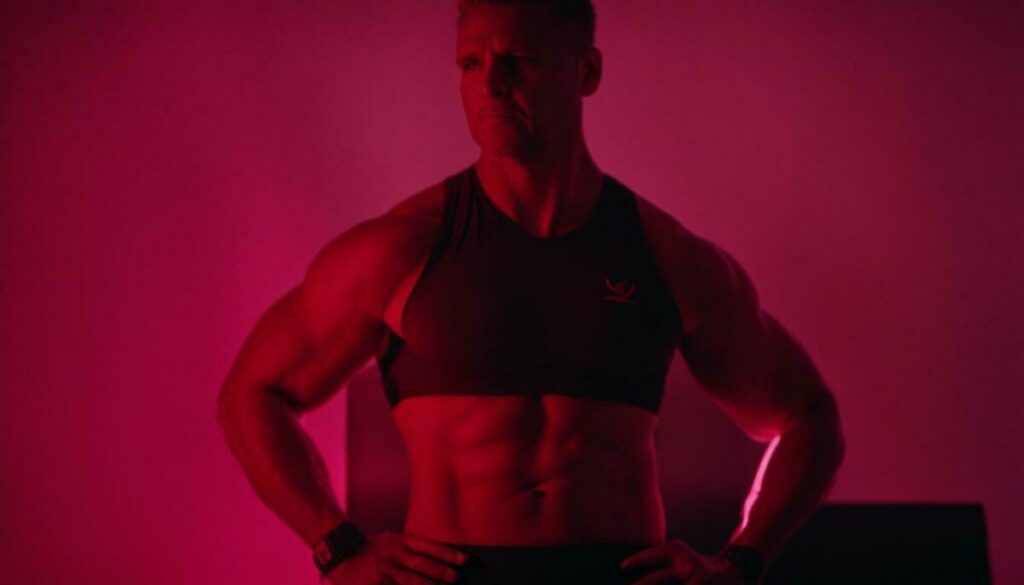
Step 2: Duration and Frequency
Use red light therapy devices once a day, every other day or as recommended by the device’s instructions.
The duration of the session (i.e., the amount of time the target area is exposed to the red light) depends on the specific device and the desired outcome (e.g., boosting testosterone levels, reducing inflammation). Generally, exposure times range from a few minutes to 20 minutes.
Step 3: Consistency
Consistency is key when it comes to using red light therapy devices for testosterone enhancement. Make sure to use the device regularly, ideally at the same time every day, to achieve optimal results.
Additionally, it’s essential to be patient and persistent. It may take several weeks before noticing any significant changes in testosterone levels.
Incorporating red light therapy into your daily routine can be an effective strategy for optimizing testosterone levels and overall well-being.
Choosing the Right Red Light Therapy Device
If you’re considering using red light therapy to boost testosterone levels, choosing the right device is crucial for achieving optimal results. High-quality devices can ensure the appropriate wavelengths and intensity required for maximum absorption and cellular energy production.
When selecting a red light therapy device for testosterone enhancement, consider the following factors:
- Wavelength: Look for a device that emits wavelengths in the red or near-infrared spectrum, as these are the most effective for testosterone production.
- Intensity: Higher intensity devices are generally more effective, but be cautious not to exceed recommended exposure times to avoid potential side effects.
- Size and Design: Consider the size and design of the device for ease of use and optimal coverage of the treatment area.
- Brand and Reputation: Choose a reputable brand with positive customer reviews to ensure quality and effectiveness.
Investing in a high-quality red light therapy device can provide significant benefits for testosterone optimization and overall well-being.

Safety Considerations and Precautions
Red light therapy is generally safe, but it’s important to take certain precautions to ensure optimal results and minimize any risks. Here are some safety guidelines to follow when using red light therapy for testosterone:
- Follow the instructions for the device carefully, and only use devices that have been tested and approved for safety.
- Never look directly at the light, as it can cause eye damage.
- Avoid using red light therapy on areas with open wounds or lesions.
- Do not use red light therapy if you are pregnant or have a history of epilepsy or seizures.
- Consult with a healthcare professional before using red light therapy if you have any medical conditions or are taking any medications.
By following these safety guidelines, you can safely and effectively use red light therapy to enhance testosterone levels.

Combining Red Light Therapy with Other Testosterone-Boosting Strategies
While red light therapy has shown potential in boosting testosterone levels, combining it with other lifestyle changes and strategies can further enhance its effectiveness. Here are some complementary approaches to consider:
- Exercise: Physical activity has been shown to increase testosterone production. Strength training, high-intensity interval training (HIIT), and compound exercises like squats, deadlifts, and bench press are particularly effective.
- Nutrition: Eating a balanced diet that includes healthy fats, protein, and plenty of fruits and vegetables can help support testosterone levels. Specific nutrients like zinc, vitamin D, and magnesium have been linked to testosterone production.
- Stress management: Chronic stress can disrupt hormone levels, including testosterone. Practicing relaxation techniques like meditation, deep breathing, and yoga can help reduce stress and promote hormonal balance.
By incorporating these strategies alongside red light therapy sessions, individuals can optimize their testosterone levels and overall well-being. As always, it’s essential to consult with a healthcare professional before making any significant dietary or lifestyle changes.

Monitoring and Tracking Testosterone Levels
Monitoring and tracking testosterone levels is crucial to determine the effectiveness of red light therapy and other testosterone-boosting strategies. Regular testing allows individuals to evaluate their progress towards optimal testosterone levels and identify any potential issues that may require intervention.
There are several methods for testing testosterone levels, including blood tests, saliva tests, and urine tests. Blood tests are the most common and reliable option and can be performed by a healthcare professional. Saliva and urine tests are also available but may not be as accurate.
It’s important to note that testosterone levels can vary throughout the day and may fluctuate due to factors such as stress, exercise, and diet. Therefore, it’s recommended to test testosterone levels at the same time of day and under similar conditions for accurate comparisons.
Interpreting testosterone levels can be complex and depends on several factors, including age, sex, and overall health. Generally, optimal testosterone levels for men range from 300-1000 ng/dL, while optimal levels for women are much lower, around 15-70 ng/dL. However, it’s essential to consult with a healthcare professional for personalized guidance.
Regular monitoring of testosterone levels is a crucial component of optimizing hormonal balance and overall well-being. By tracking progress and making necessary adjustments, individuals can maximize the benefits of red light therapy and other testosterone-boosting strategies.

Success Stories: Real-life Experiences with Red Light Therapy for Testosterone
Many individuals have reported success in using red light therapy to boost their testosterone levels. For example, John, a 45-year-old man, had been struggling with low testosterone levels for several years. He had tried various medications and supplements, but none seemed to have a significant effect.
After doing some research, John decided to try red light therapy. He purchased a high-quality device and started doing 10-minute sessions two to three times per week. After just a few weeks, John noticed a significant improvement in his energy levels, mood, and libido.
Likewise, Sarah, a 35-year-old woman, had been experiencing symptoms of hormonal imbalance, including low testosterone, for several years. She had tried various treatments, but none seemed to have a lasting effect.
After researching natural approaches, Sarah decided to try red light therapy. She used a device for 10 minutes per day, five days per week, and noticed a significant improvement in her energy levels, mood, and overall well-being.
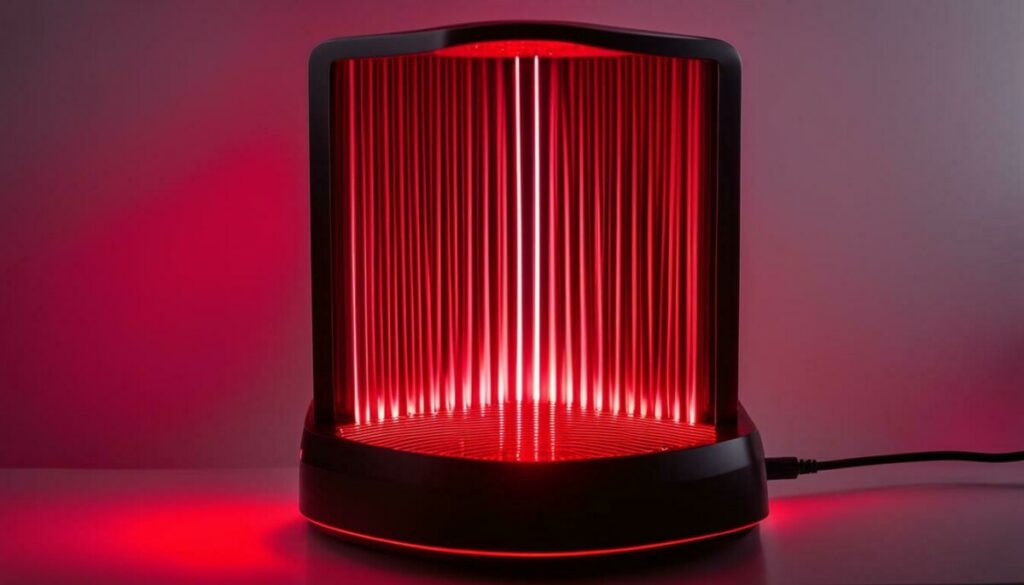
These are just a few examples of the success individuals have experienced with red light therapy for testosterone production and low testosterone. While results may vary, many people report significant improvements in their hormonal balance and overall well-being after using red light therapy.
Frequently Asked Questions about Red Light Therapy for Testosterone
As with any new treatment, it’s natural to have questions about red light therapy for boosting testosterone. Here are some of the most frequently asked questions and their answers:
Can red light therapy really boost testosterone?
Yes, several studies have demonstrated the positive effects of red light therapy on testosterone production and levels. Red light therapy stimulates cellular energy production, which can enhance testosterone synthesis.
How often should I use red light therapy for testosterone?
The frequency of red light therapy sessions may vary depending on individual needs and goals. However, most experts recommend 2-3 sessions per week for optimal results.
Can women use red light therapy for testosterone optimization?
Yes, women can also benefit from hormonal balance, including testosterone optimization. Red light therapy is a safe and effective approach for achieving hormonal balance in both men and women.
Is red light therapy safe?
Yes, red light therapy is generally safe and non-invasive. However, it’s important to follow safety guidelines and consult with a healthcare professional if you have specific concerns or medical conditions.
How long does it take to see results from red light therapy for testosterone?
Results may vary depending on individual factors such as age, health status, and lifestyle habits. However, some individuals may notice improvements in testosterone levels and overall well-being after just a few sessions.
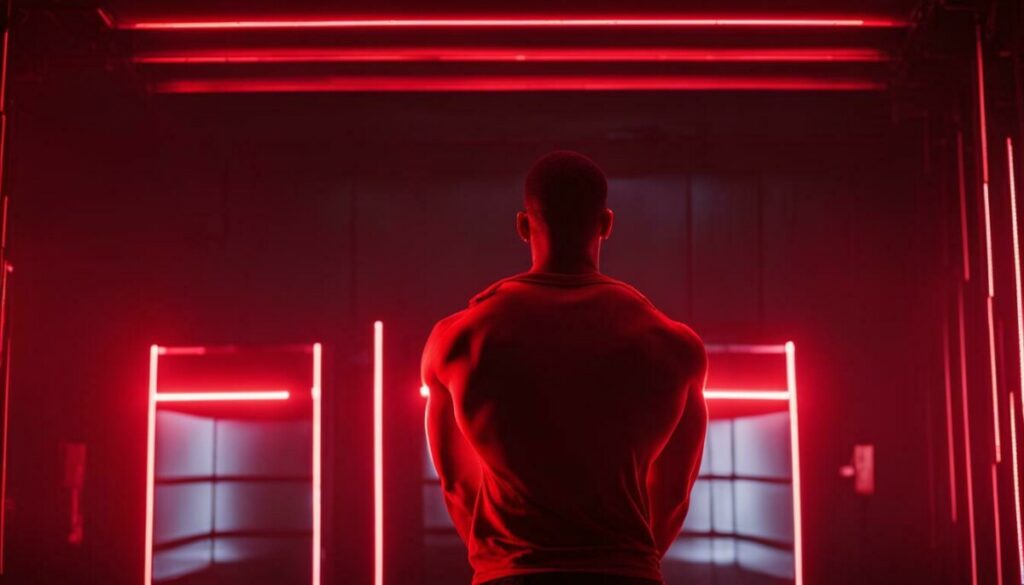
Red Light Therapy for Testosterone: Debunking Myths and Misconceptions
As with any emerging therapy, red light therapy has its share of misconceptions and myths when it comes to its effect on testosterone levels. Here, we’ll address some common misconceptions and provide evidence-based information on how red light therapy affects testosterone levels.
- Myth: Only men can benefit from red light therapy for testosterone.
Reality: While testosterone is typically associated with men, women can also benefit from hormonal balance. Red light therapy has been shown to increase testosterone levels in both men and women, making it an effective treatment for hormonal imbalances in both genders.
- Myth: Red light therapy has no scientific backing for boosting testosterone.
Reality: There is a growing body of research demonstrating the effectiveness of red light therapy for boosting testosterone levels. Studies have shown that red light therapy can effectively increase testosterone levels and improve hormone balance in both men and women.
- Myth: Red light therapy is a quick fix for low testosterone levels.
Reality: While red light therapy can be an effective tool for restoring hormonal balance, it should not be considered a quick fix for low testosterone levels. It works best when used in conjunction with other lifestyle changes and strategies, such as exercise and nutrition, for optimal results.
- Myth: Red light therapy has no side effects.
Reality: While side effects from red light therapy are rare, it’s important to be aware of potential risks and to use the therapy safely. Some individuals may experience mild side effects such as headaches or eye strain, but these can be minimized by using the therapy as instructed and with high-quality devices.
- Myth: Red light therapy is a one-size-fits-all solution for testosterone optimization.
Reality: Not all red light therapy devices are created equal, and what works for one person may not work for another. It’s important to choose a high-quality device and to use it as instructed for optimal results. Additionally, red light therapy should be used in conjunction with other testosterone-boosting strategies for maximum effectiveness.
With the right device and guidance, red light therapy can be a safe and effective tool for boosting testosterone levels and achieving hormonal balance. By debunking these myths and misconceptions, individuals can make informed decisions about incorporating red light therapy into their testosterone optimization strategies.

Red Light Therapy for Testosterone: Considerations for Women
While testosterone is often associated with men, women also require optimal hormonal balance for overall well-being. Red light therapy can help women achieve hormonal balance, including testosterone optimization, with some important considerations:
- Menstrual cycle: Women should avoid using red light therapy on the abdomen or lower back during ovulation, as red light may increase blood flow and potentially stimulate ovulation.
- Pregnancy: Red light therapy has not been extensively studied in pregnant women, so it’s best to avoid using it during pregnancy to minimize potential risks.
- Hormonal imbalances: Women with underlying medical conditions, such as polycystic ovary syndrome (PCOS), should consult with a healthcare professional before using red light therapy.

Despite these considerations, red light therapy can be a safe and effective natural approach to achieving hormonal balance for women. By using red light therapy devices in a safe and controlled manner, women can optimize their testosterone and overall hormonal levels, leading to improved well-being and quality of life.
Potential Side Effects of Red Light Therapy for Testosterone
While red light therapy is generally safe and well-tolerated, there are some potential side effects to be aware of. These side effects are usually mild and temporary, but it’s essential to take precautions to minimize their occurrence.
Eye Strain and Retinal Damage
Exposure to bright red light can cause eye strain and discomfort, and there is some concern that it may cause retinal damage over time. It’s important to wear protective eyewear, such as goggles or glasses, when using red light therapy devices to prevent eye damage. Additionally, never look directly into the light source.
Skin Irritation and Burns
Red light therapy can cause skin irritation, especially if the skin is sensitive or if the therapy is used for an extended period. Burns can also occur if the skin is exposed to the light for too long. To prevent this, follow device instructions carefully and avoid overuse.
Interference with Medications and Medical Conditions
Red light therapy may interfere with certain medications, such as antibiotics and anti-inflammatory drugs. It may also exacerbate certain medical conditions, such as epilepsy or thyroid disorders. It’s essential to speak with your healthcare provider before using red light therapy if you have any medical conditions, are taking any medications, or have any concerns.

It’s important to note that these side effects are rare and typically only occur with prolonged or incorrect use of red light therapy. When used properly, red light therapy is a safe and effective option for balancing testosterone levels.
Seeking Professional Guidance for Red Light Therapy and Testosterone
If you have any specific concerns or medical conditions related to testosterone, it’s advisable to seek guidance from a licensed healthcare professional. While red light therapy is generally safe and well-tolerated, it’s essential to ensure that it doesn’t interfere with any ongoing treatments or medications.
Moreover, if you’re new to red light therapy or have any pre-existing medical conditions, it’s important to speak with a healthcare provider before starting any treatment plan. They can help determine if red light therapy is safe and appropriate for you and advise on the best course of action.
A healthcare provider can also guide you on the correct usage and dosage of red light therapy devices to ensure optimal results. Depending on your individual needs and goals, they may recommend a specific device, treatment duration, and frequency of sessions.
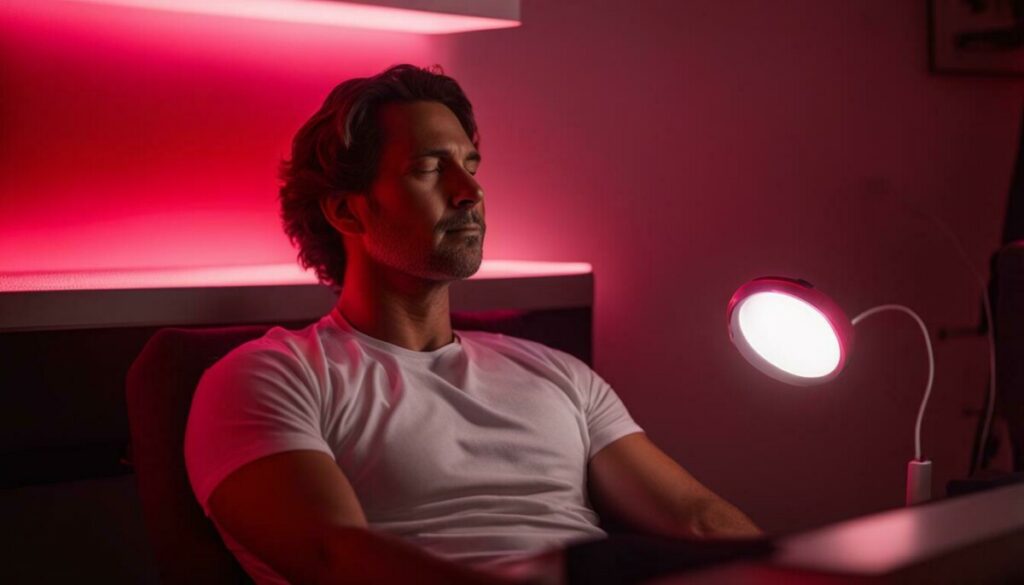
In conclusion, seeking professional guidance can help you make informed decisions about using red light therapy for testosterone optimization. It’s always better to err on the side of caution and consult with a licensed healthcare provider to ensure that you’re taking the right steps for your health and well-being.
Conclusion
Red light therapy offers a natural and non-invasive approach to enhancing testosterone levels for both men and women. By understanding the science behind red light therapy and its potential benefits for hormonal balance, individuals can optimize their well-being and quality of life.
When using red light therapy devices, it’s important to follow safety guidelines and consider factors such as device quality and positioning for optimal results. Additionally, combining red light therapy with other testosterone-boosting strategies such as exercise and nutrition can further enhance its effectiveness.
Monitoring and tracking testosterone levels is essential to evaluate the effectiveness of red light therapy and other testosterone-boosting strategies. Consulting with a healthcare professional can also be helpful for those with specific concerns or medical conditions related to testosterone.
Overall, red light therapy shows promise as a safe and effective natural approach to boosting testosterone levels and improving overall health.
FAQ
How does red light therapy affect testosterone levels?
Red light therapy has been shown to stimulate testosterone production and promote hormonal balance.
Can red light therapy help with low testosterone?
Yes, red light therapy has the potential to increase testosterone levels in individuals with low testosterone.
How often should I use red light therapy for testosterone enhancement?
The frequency of red light therapy sessions can vary, but most experts recommend using it 3-5 times per week for optimal results.
How long does it take to see results from red light therapy for testosterone?
Results may vary, but many people start noticing improvements in testosterone levels and overall well-being after a few weeks of consistent red light therapy sessions.
Can red light therapy be used in conjunction with other testosterone-boosting strategies?
Absolutely! Red light therapy can complement other lifestyle changes such as exercise, nutrition, and stress management to optimize testosterone levels.
Is red light therapy safe?
Yes, red light therapy is generally safe when used as directed. It has minimal side effects and is non-invasive.
How do I choose the right red light therapy device for testosterone enhancement?
When selecting a red light therapy device, consider factors such as wavelength, power output, and device quality. Higher quality devices tend to yield better results.
Can women benefit from red light therapy for testosterone optimization?
Yes, red light therapy can help women achieve hormonal balance, including testosterone optimization.
Are there any side effects of red light therapy for testosterone?
While rare, some individuals may experience temporary side effects such as mild skin irritation or headaches. It’s important to follow safety guidelines and consult with a professional if needed.
Should I consult with a healthcare professional before using red light therapy for testosterone?
If you have specific concerns or medical conditions related to testosterone, it’s advisable to seek guidance from a healthcare professional to ensure safe and effective usage.




